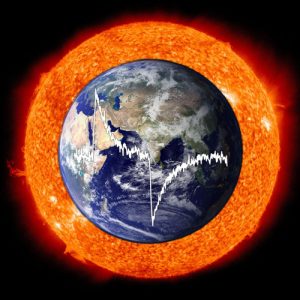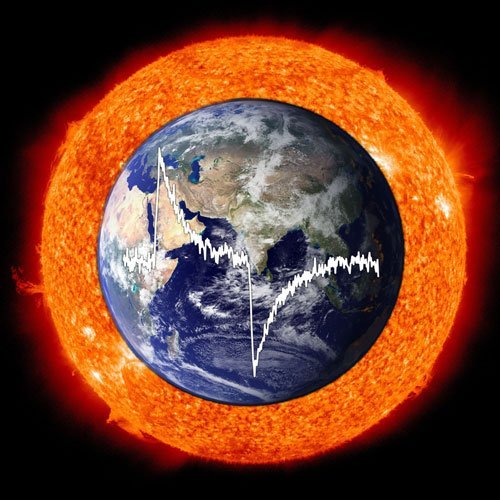The earth’s thermostat
The earth’s thermostat

A chemical thermostat is active on our planet. It has ensured for ages that the natural variations of the climate do not become too extreme. As we have seen, these variations were quite pronounced and cover a range from “Snowball Earth” to the extreme greenhouse climate of the Cretaceous period (see: Natural climate fluctuations). However, there has always been liquid water on the planet, so an important requirement was met.
The thermostat is based on a process called chemical weathering (erosion) of silicate rock (e.g. granite). This rock reacts with atmospheric CO2 and the reaction is a sink for this greenhouse gas. The process works particularly well in the high mountains, where the rock is in direct contact with the atmosphere. If, on the other hand, vegetation and soil are present, the rock is protected and the process is very slow.
Here’s the chemical process
There are of course a lot of different silicate rocks. Here the process is shown using a chemically very simple silicate mineral, wollastonite, CaSiO3. The CO2 from the atmosphere is dissolved in water as carbonic acid (CO2 + H2O –> H2CO3)
Weathering process: CaSiO3 + H2CO3 –> CaCO3 + H2O + SiO2
The mineral is therefore dissolved and limestone, CaCO3, is created as a by-product. Within the carbon cycle, this is the most important process for transforming carbon from the atmosphere into carbon in rock form.
Thermostat for global climate
So how does this chemical process work as a thermostat? Basically it is very simple: When the CO2 content of the atmosphere is high, it is generally warmer. As a result, the oceans are warmer, there is more evaporation and more precipitation. More precipitation and higher temperatures accelerate the chemical process: higher temperature accelerates any chemical process and more precipitation means more water is available. tThe process can only take place with water. So the more precipitation there is the better the weathering works. If the process takes place faster, more CO2 is removed from the atmosphere. Then this will cause long term global cooling, less CO2 will be removed and the climate stabilizes.
In times when volcanic activity is increased, more CO2 is released into the atmosphere, because volcanoes are large CO2 emitters. So it’s getting warmer, again more precipitation and weathering. The rock erosion described here can compensate for higher CO2 levels and prevent the climate from becoming too extreme.
Effects on the present day situation
Anyone who now thinks that chemical weathering will also solve the current man-made climate crisis will unfortunately have to be disappointed. In theory this is true, but the thermostat works very slowly and over a period of millions of years. This means that there is absolutely no chance of slowing the extremely rapid increase in CO2 in the atmosphere. This increase over the last 150 years from 280 to 420 ppm is just way too quick. With regards to weathering we have to think in geological periods of millions of years. So it’s true, that it can be assumed that chemical weathering will restore an equilibrium, but that might take millions of years.

Kategorie:

Welcome to my website!
